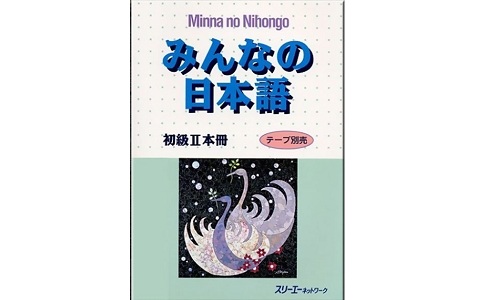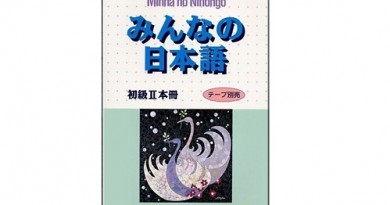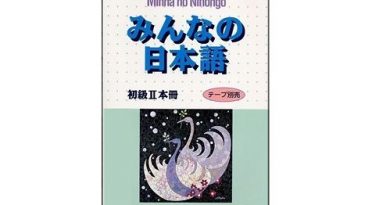Learn Japanese for beginner lesson 4
Learn Japanese for beginer lesson 4. hi everyone. In this post, Learn Japanese Daily will introduce you the very first lessons in the Japanese course-book : Minna no nihongo (Japanese for everyone)
Learn Japanese for beginer lesson 4
Summary :
The previous lesson had shown all the Hiragana and the rule of phonetic variant. In the fourth lesson, learners will learn the second writing system Katakana and also some digraphs, germination and numbers in Japanese.
First of all, the writing system Katakana is use to represent foreign word. It can be said that the systems borrow word of Japanese is very plentiful. Besides that, Japanese people use Katakana to emphasize Japanese tame words to show the purpose of something. The way to read Katakana is same as Hiragana, it is only different in the way to write. While the Hiragana is also called the soft writing system. Katakana is called the hard writing system. It means all the stroke from this system looks hard and steady.
First line: アイウエオ (a, i, u, e, o)
Second line: カキクケコ (ka, ki, ku, ke, ko)
Third line: サシスセソ ( sa, shi, su, se, so)
In the third line, two letters シ and ソ is different. The letter シ has 2 small comma parellel downward, 3 strokes are write from left to right. The letter ソ has only 1 small comma and the stroke under is write from right to left.
Fourth line: タチツテト (ta, chi, tsu, te, to)
In the fourth line, the letter ツ (tsu) is different from シ (shi). The letter シ (shi) the starting point of 2 comma and the under stroke are in vertical line, while letter ツ (tsu) is in horizontal line
Fifth line: ナニヌネノ (na, ni, nu, ne, no)
The letter ニ has only 2 strokes but the above is shorter than the under. The letter ノ is write from right to left.
Sixth line: ハヒフヘホ (ha, hi, fu, he, ho)
Seven line: マミムメモ(ma, mi, mu, me, mo)
The letter ミ has 3 strokes downward and letter メ is same as a sword.
Eight line: ヤユヨ (ya, yu, yo)
Nine line: ラリルレロ (ra, ri, ru, re, ro)
3 last letter: ワヲン (wa, wo, n)
The letter ワ (wa) is different from フ (fu) only a small stroke is added in letter wa.
Next part of the lesson is digraphs and gemination. First is the digraphs is a small the letter of や、ゆ、よ to create a syllable in 2 words. The letters going with are き、ぎ、し、り、に、ひ、び、ぴ、み
Way to read:
き: きゃ, きゅ, きょ (kya, kyu, kyo)
ぎ: ぎゃ, ぎゅ, ぎょ (gya, gyu, gyo)
ち: ちゃ, ちゅ, ちょ (cha, chu, cho)
ぢ: ぢゃ, ぢゅ, ぢょ (ja, ju, jo)
し: しゃ, しゅ, しょ (sha, shu, sho)
に: にゃ, にゅ, にょ (nya, nyu, nyo)
ひ: ひゃ, ひゅ, ひょ (hya, hyu, hyo)
び: びゃ, びゅ, びょ (bya, byu, byo)
ぴ: ぴゃ, ぴゅ, ぴょ (pya, pyu, pyo)
み: みゃ, みゅ, みょ (mya, myu, myo)
り: りゃ, りゅ, りょ (rya, ryu, ryo)
In germination,it means there is a small っ stand in front of some letter か, さ, た, ぱ it will have double consonant such as おと means sound when add tsu it will be おっと means husband. The way to pronounce and write is different.
Next, the content of numbers in Japanese.
1: いち
2: に
3: さん
4: よん/し
5: ご
6: ろく
7 : なな/しち
8: はち
9: きゅう
10: じゅう
The number 0 is zero or rei. To count in tens in Japanese is same as in English read the tens first then the unit. For example: number 23 it reads “twenty three” in Japanese に じゅう さん in this case じゅう is the tens. Other numbers read same like 40, 50, 60 (よんじゅう、ごじゅう、ろくじゅう).
57: ご じゅう なな
69: ろく じゅう きゅう
12: じゅう に
The numbers in Japanese is abundance, this is only the basic numbers. The way to count people is different from the way to count object, and also to count a big object is different from the small one.
To sum up, this lesson had shown the second writing system Katakana, learn some digraphs, gemination and numbers in Japanese.
Above is Learn Japanese for beginer lesson 4. Check out other similar lesson in category : learn japanese for beginer or learn japanese with minna no nihongo. We hope with the instruction in this post, you will find that learning Japanese is not so difficult and you can learn Japanese by yourself. If you have any question, just leave us your question below the post.
Stay with us on :
Facebook - Twitter - Pinterest - Reddit



